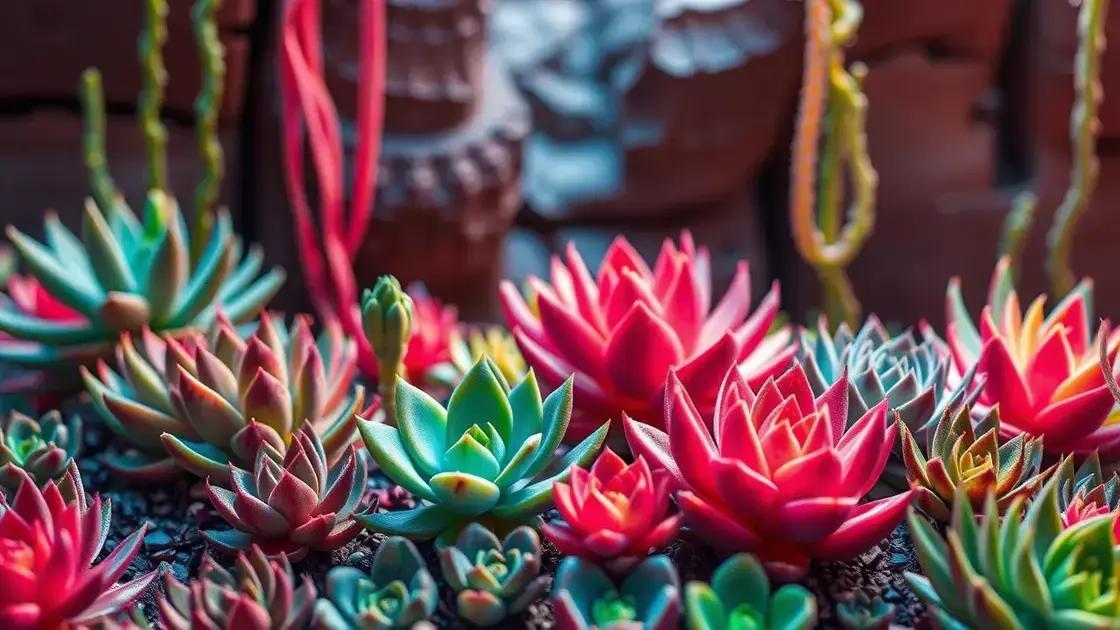How to Take Care of Succulent Plants: 5 Expert Tips for Thriving Greens
How to take care of succulent plants is a question many aspiring gardeners ponder. With their fascinating shapes and vibrant colors, these easy-to-care-for greens can transform any space. However, understanding the best practices for nurturing these beauties can make the difference between a thriving collection and a sad assortment. Let’s explore some crucial tips to help your succulent garden flourish.
Table of Contents
ToggleEssential watering schedule for succulent plants
How to take care of succulent plants involves understanding their unique watering needs, which can vary significantly based on climatic conditions and the specific type of succulent. Succulents store water in their leaves and stems, enabling them to thrive in arid environments, but this does not mean they should be neglected. Here’s a guide to creating an effective watering schedule for your succulent plants.
Key considerations for a watering schedule
- Type of succulent: Different types, such as Echeveria, Sedum, or Aloe, have varying water needs.
- Climate: Humid climates may require less watering, while dry, hot conditions may need more frequent moisture.
- Pot and soil type: Well-draining pots and soil mix help prevent root rot, making it essential to monitor moisture levels.
Creating a watering routine
- Check the soil moisture: Insert your finger into the soil about an inch deep. If it feels dry, it’s time to water.
- Water thoroughly: When watering, ensure water drains from the bottom of the pot. This promotes healthy root growth.
- Adjust frequency: Typically, succulents need watering every 1-3 weeks, but adjust according to the season and plant needs.
Signs of overwatering versus underwatering
| Overwatering Symptoms | Underwatering Symptoms |
|---|---|
| Leaves appear mushy and discolored | Leaves look shriveled and dry |
| Root rot may occur | Growth stalls or slows down |
Watering tips based on the season
In winter, succulents go dormant, so reduce watering frequency. In spring and summer, their growth rates increase, so provide more hydration. This seasonal adjustment helps maintain healthy plants.
When exploring indoor gardening techniques, ensure your watering habits adjust to indoor conditions as well.
With practice, you will discover the optimal balance for your succulents, helping them thrive beautifully!
Optimal lighting conditions for thriving succulents

Optimal lighting conditions for thriving succulents are crucial to ensure their health and vibrancy. Succulents rely on adequate light to photosynthesize effectively, enabling them to grow strong and colorful. Understanding the specifics of lighting can help you maximize their potential.
Types of lighting suitable for succulents
- Natural sunlight: Ideal for most succulents, a south or west-facing window allows for direct sunlight.
- Artificial grow lights: Perfect for indoor settings, these replicate sunlight and can be controlled effectively.
- Filtered light: Some succulents thrive in a light that is indirect, avoiding harsh sunlight that might scorch their leaves.
Creating an effective lighting routine
- Assess light levels: Place your succulent where it can receive the most light throughout the day.
- Rotate your plants: Giving each side of the succulent equal exposure promotes even growth.
- Monitor growth: Observe your plant’s growth pattern. If it’s stretching or leaning, it may require more light.
Signs your succulent needs more light
| Symptoms | Solution |
|---|---|
| Stretched or elongated leaves | Move closer to a light source |
| Pale or faded colors | Increase exposure to direct sunlight |
| Leaves dropping off | Check for adequate light levels |
Seasonal lighting adjustments
During winter months, natural light may diminish. In such cases, consider supplementing with grow lights to ensure your succulents get enough illumination. This is especially crucial for indoor gardeners.
When exploring indoor gardening techniques, always remember that the right lighting is key to succulent success.
Best soil and potting practices for healthy growth
Best soil and potting practices for healthy growth are essential for nurturing your succulent plants. The right soil combination and potting techniques can promote strong root development and prevent common issues like root rot or nutrient deficiency. Here’s how to provide your succulents with the perfect environment to thrive.
Choosing the right soil for succulents
- Well-draining mix: Look for a soil blend specifically designed for succulents and cacti to prevent excess moisture.
- Components to consider: A mixture of potting soil, perlite, and sand boosts drainage and aeration.
- pH levels: Succulent soil should ideally have a neutral pH (6.0-7.0) to support optimal growth.
Essential potting techniques for succulents
- Select an appropriate pot: Ensure pots have drainage holes to allow excess water to escape.
- Layer the bottom: Use small stones or gravel at the bottom for added drainage before adding soil.
- Fill, plant, and settle: After placing the plant, add soil around it and gently press to eliminate air pockets.
Common mistakes to avoid with soil and pots
| Mistake | Effect |
|---|---|
| Using regular potting soil | Can suffocate roots and lead to root rot |
| Neglecting drainage | Results in standing water and plant decline |
| Choosing the wrong pot size | Can restrict root growth or cause instability |
Best practices for repotting succulents
Repotting should be done every 1-2 years to refresh the soil and provide more space for growth. Be cautious of the seasons—late spring is the best time to repot succulents as they are actively growing.
When exploring indoor gardening techniques, always consider the significance of proper soil and potting methods to ensure your succulents remain healthy and vibrant.
In conclusion
How to take care of succulent plants encompasses several critical aspects: establishing an effective watering schedule, providing optimal lighting conditions, and implementing the best soil and potting practices. By following these guidelines, you can create an environment where your succulents thrive, showcasing their unique beauty and resilience.
Remember, the journey of plant care is not just about maintaining their health but also about enjoying the process. For further insights and tips on enhancing your indoor garden, explore reputable resources to deepen your knowledge and refine your techniques.

